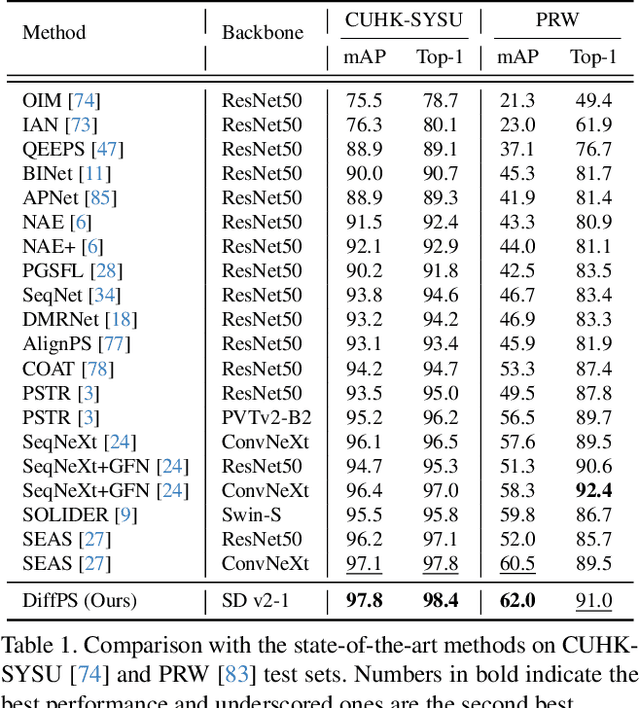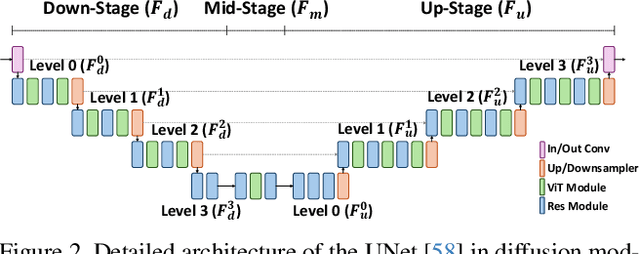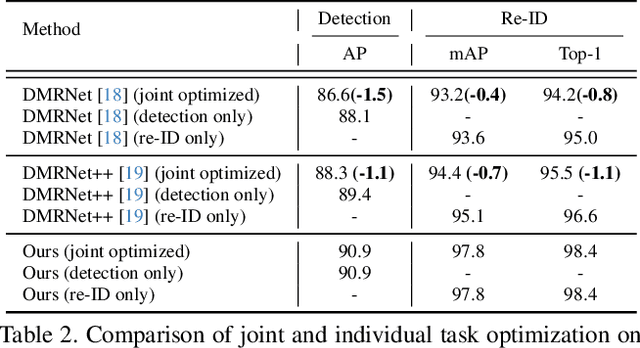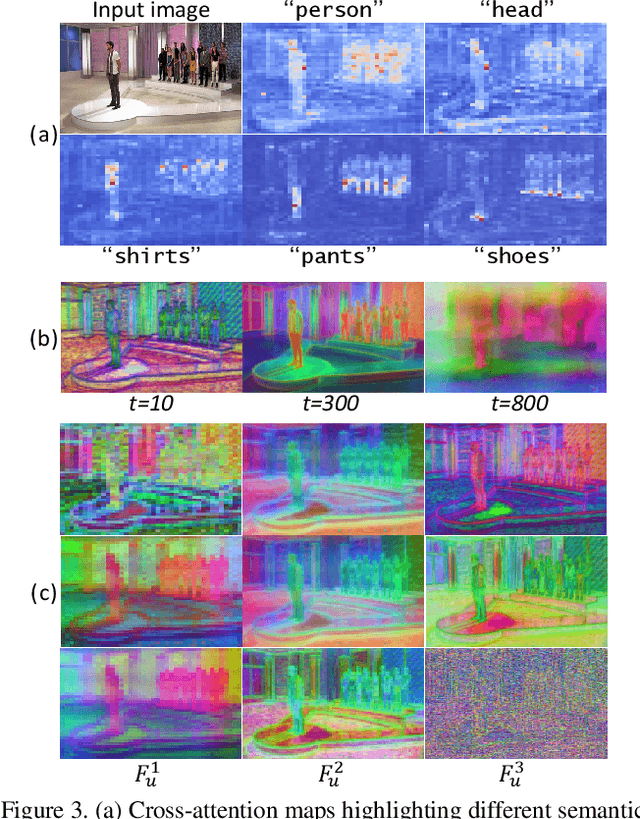Object Detection
Object detection is a computer vision task in which the goal is to detect and locate objects of interest in an image or video. The task involves identifying the position and boundaries of objects in an image, and classifying the objects into different categories. It forms a crucial part of vision recognition, alongside image classification and retrieval.
Papers and Code
Sparse Multiview Open-Vocabulary 3D Detection
Sep 19, 2025



The ability to interpret and comprehend a 3D scene is essential for many vision and robotics systems. In numerous applications, this involves 3D object detection, i.e.~identifying the location and dimensions of objects belonging to a specific category, typically represented as bounding boxes. This has traditionally been solved by training to detect a fixed set of categories, which limits its use. In this work, we investigate open-vocabulary 3D object detection in the challenging yet practical sparse-view setting, where only a limited number of posed RGB images are available as input. Our approach is training-free, relying on pre-trained, off-the-shelf 2D foundation models instead of employing computationally expensive 3D feature fusion or requiring 3D-specific learning. By lifting 2D detections and directly optimizing 3D proposals for featuremetric consistency across views, we fully leverage the extensive training data available in 2D compared to 3D. Through standard benchmarks, we demonstrate that this simple pipeline establishes a powerful baseline, performing competitively with state-of-the-art techniques in densely sampled scenarios while significantly outperforming them in the sparse-view setting.
Leveraging Prior Knowledge of Diffusion Model for Person Search
Oct 02, 2025



Person search aims to jointly perform person detection and re-identification by localizing and identifying a query person within a gallery of uncropped scene images. Existing methods predominantly utilize ImageNet pre-trained backbones, which may be suboptimal for capturing the complex spatial context and fine-grained identity cues necessary for person search. Moreover, they rely on a shared backbone feature for both person detection and re-identification, leading to suboptimal features due to conflicting optimization objectives. In this paper, we propose DiffPS (Diffusion Prior Knowledge for Person Search), a novel framework that leverages a pre-trained diffusion model while eliminating the optimization conflict between two sub-tasks. We analyze key properties of diffusion priors and propose three specialized modules: (i) Diffusion-Guided Region Proposal Network (DGRPN) for enhanced person localization, (ii) Multi-Scale Frequency Refinement Network (MSFRN) to mitigate shape bias, and (iii) Semantic-Adaptive Feature Aggregation Network (SFAN) to leverage text-aligned diffusion features. DiffPS sets a new state-of-the-art on CUHK-SYSU and PRW.
HELIOS: Hierarchical Exploration for Language-grounded Interaction in Open Scenes
Sep 26, 2025Language-specified mobile manipulation tasks in novel environments simultaneously face challenges interacting with a scene which is only partially observed, grounding semantic information from language instructions to the partially observed scene, and actively updating knowledge of the scene with new observations. To address these challenges, we propose HELIOS, a hierarchical scene representation and associated search objective to perform language specified pick and place mobile manipulation tasks. We construct 2D maps containing the relevant semantic and occupancy information for navigation while simultaneously actively constructing 3D Gaussian representations of task-relevant objects. We fuse observations across this multi-layered representation while explicitly modeling the multi-view consistency of the detections of each object. In order to efficiently search for the target object, we formulate an objective function balancing exploration of unobserved or uncertain regions with exploitation of scene semantic information. We evaluate HELIOS on the OVMM benchmark in the Habitat simulator, a pick and place benchmark in which perception is challenging due to large and complex scenes with comparatively small target objects. HELIOS achieves state-of-the-art results on OVMM. As our approach is zero-shot, HELIOS can also transfer to the real world without requiring additional data, as we illustrate by demonstrating it in a real world office environment on a Spot robot.
Unlocking Vision-Language Models for Video Anomaly Detection via Fine-Grained Prompting
Oct 02, 2025Prompting has emerged as a practical way to adapt frozen vision-language models (VLMs) for video anomaly detection (VAD). Yet, existing prompts are often overly abstract, overlooking the fine-grained human-object interactions or action semantics that define complex anomalies in surveillance videos. We propose ASK-Hint, a structured prompting framework that leverages action-centric knowledge to elicit more accurate and interpretable reasoning from frozen VLMs. Our approach organizes prompts into semantically coherent groups (e.g. violence, property crimes, public safety) and formulates fine-grained guiding questions that align model predictions with discriminative visual cues. Extensive experiments on UCF-Crime and XD-Violence show that ASK-Hint consistently improves AUC over prior baselines, achieving state-of-the-art performance compared to both fine-tuned and training-free methods. Beyond accuracy, our framework provides interpretable reasoning traces towards anomaly and demonstrates strong generalization across datasets and VLM backbones. These results highlight the critical role of prompt granularity and establish ASK-Hint as a new training-free and generalizable solution for explainable video anomaly detection.
A Novel Compression Framework for YOLOv8: Achiev-ing Real-Time Aerial Object Detection on Edge Devices via Structured Pruning and Channel-Wise Distillation
Sep 16, 2025Efficient deployment of deep learning models for aerial object detection on resource-constrained devices requires significant compression without com-promising performance. In this study, we propose a novel three-stage compression pipeline for the YOLOv8 object detection model, integrating sparsity-aware training, structured channel pruning, and Channel-Wise Knowledge Distillation (CWD). First, sparsity-aware training introduces dynamic sparsity during model optimization, effectively balancing parameter reduction and detection accuracy. Second, we apply structured channel pruning by leveraging batch normalization scaling factors to eliminate redundant channels, significantly reducing model size and computational complexity. Finally, to mitigate the accuracy drop caused by pruning, we employ CWD to transfer knowledge from the original model, using an adjustable temperature and loss weighting scheme tailored for small and medium object detection. Extensive experiments on the VisDrone dataset demonstrate the effectiveness of our approach across multiple YOLOv8 variants. For YOLOv8m, our method reduces model parameters from 25.85M to 6.85M (a 73.51% reduction), FLOPs from 49.6G to 13.3G, and MACs from 101G to 34.5G, while reducing AP50 by only 2.7%. The resulting compressed model achieves 47.9 AP50 and boosts inference speed from 26 FPS (YOLOv8m baseline) to 45 FPS, enabling real-time deployment on edge devices. We further apply TensorRT as a lightweight optimization step. While this introduces a minor drop in AP50 (from 47.9 to 47.6), it significantly improves inference speed from 45 to 68 FPS, demonstrating the practicality of our approach for high-throughput, re-source-constrained scenarios.
BEVUDA++: Geometric-aware Unsupervised Domain Adaptation for Multi-View 3D Object Detection
Sep 17, 2025Vision-centric Bird's Eye View (BEV) perception holds considerable promise for autonomous driving. Recent studies have prioritized efficiency or accuracy enhancements, yet the issue of domain shift has been overlooked, leading to substantial performance degradation upon transfer. We identify major domain gaps in real-world cross-domain scenarios and initiate the first effort to address the Domain Adaptation (DA) challenge in multi-view 3D object detection for BEV perception. Given the complexity of BEV perception approaches with their multiple components, domain shift accumulation across multi-geometric spaces (e.g., 2D, 3D Voxel, BEV) poses a significant challenge for BEV domain adaptation. In this paper, we introduce an innovative geometric-aware teacher-student framework, BEVUDA++, to diminish this issue, comprising a Reliable Depth Teacher (RDT) and a Geometric Consistent Student (GCS) model. Specifically, RDT effectively blends target LiDAR with dependable depth predictions to generate depth-aware information based on uncertainty estimation, enhancing the extraction of Voxel and BEV features that are essential for understanding the target domain. To collaboratively reduce the domain shift, GCS maps features from multiple spaces into a unified geometric embedding space, thereby narrowing the gap in data distribution between the two domains. Additionally, we introduce a novel Uncertainty-guided Exponential Moving Average (UEMA) to further reduce error accumulation due to domain shifts informed by previously obtained uncertainty guidance. To demonstrate the superiority of our proposed method, we execute comprehensive experiments in four cross-domain scenarios, securing state-of-the-art performance in BEV 3D object detection tasks, e.g., 12.9\% NDS and 9.5\% mAP enhancement on Day-Night adaptation.
The Average Patient Fallacy
Sep 30, 2025
Machine learning in medicine is typically optimized for population averages. This frequency weighted training privileges common presentations and marginalizes rare yet clinically critical cases, a bias we call the average patient fallacy. In mixture models, gradients from rare cases are suppressed by prevalence, creating a direct conflict with precision medicine. Clinical vignettes in oncology, cardiology, and ophthalmology show how this yields missed rare responders, delayed recognition of atypical emergencies, and underperformance on vision-threatening variants. We propose operational fixes: Rare Case Performance Gap, Rare Case Calibration Error, a prevalence utility definition of rarity, and clinically weighted objectives that surface ethical priorities. Weight selection should follow structured deliberation. AI in medicine must detect exceptional cases because of their significance.
GiAnt: A Bio-Inspired Hexapod for Adaptive Terrain Navigation and Object Detection
Sep 18, 2025This paper presents the design, development and testing of GiAnt, an affordable hexapod which is inspired by the efficient motions of ants. The decision to model GiAnt after ants rather than other insects is rooted in ants' natural adaptability to a variety of terrains. This bio-inspired approach gives it a significant advantage in outdoor applications, offering terrain flexibility along with efficient energy use. It features a lightweight 3D-printed and laser cut structure weighing 1.75 kg with dimensions of 310 mm x 200 mm x 120 mm. Its legs have been designed with a simple Single Degree of Freedom (DOF) using a link and crank mechanism. It is great for conquering challenging terrains such as grass, rocks, and steep surfaces. Unlike traditional robots using four wheels for motion, its legged design gives superior adaptability to uneven and rough surfaces. GiAnt's control system is built on Arduino, allowing manual operation. An effective way of controlling the legs of GiAnt was achieved by gait analysis. It can move up to 8 cm of height easily with its advanced leg positioning system. Furthermore, equipped with machine learning and image processing technology, it can identify 81 different objects in a live monitoring system. It represents a significant step towards creating accessible hexapod robots for research, exploration, and surveying, offering unique advantages in adaptability and control simplicity.
Joint Optimization of Speaker and Spoof Detectors for Spoofing-Robust Automatic Speaker Verification
Oct 02, 2025Spoofing-robust speaker verification (SASV) combines the tasks of speaker and spoof detection to authenticate speakers under adversarial settings. Many SASV systems rely on fusion of speaker and spoof cues at embedding, score or decision levels, based on independently trained subsystems. In this study, we respect similar modularity of the two subsystems, by integrating their outputs using trainable back-end classifiers. In particular, we explore various approaches for directly optimizing the back-end for the recently-proposed SASV performance metric (a-DCF) as a training objective. Our experiments on the ASVspoof 5 dataset demonstrate two important findings: (i) nonlinear score fusion consistently improves a-DCF over linear fusion, and (ii) the combination of weighted cosine scoring for speaker detection with SSL-AASIST for spoof detection achieves state-of-the-art performance, reducing min a-DCF to 0.196 and SPF-EER to 7.6%. These contributions highlight the importance of modular design, calibrated integration, and task-aligned optimization for advancing robust and interpretable SASV systems.
Performance Optimization of YOLO-FEDER FusionNet for Robust Drone Detection in Visually Complex Environments
Sep 17, 2025



Drone detection in visually complex environments remains challenging due to background clutter, small object scale, and camouflage effects. While generic object detectors like YOLO exhibit strong performance in low-texture scenes, their effectiveness degrades in cluttered environments with low object-background separability. To address these limitations, this work presents an enhanced iteration of YOLO-FEDER FusionNet -- a detection framework that integrates generic object detection with camouflage object detection techniques. Building upon the original architecture, the proposed iteration introduces systematic advancements in training data composition, feature fusion strategies, and backbone design. Specifically, the training process leverages large-scale, photo-realistic synthetic data, complemented by a small set of real-world samples, to enhance robustness under visually complex conditions. The contribution of intermediate multi-scale FEDER features is systematically evaluated, and detection performance is comprehensively benchmarked across multiple YOLO-based backbone configurations. Empirical results indicate that integrating intermediate FEDER features, in combination with backbone upgrades, contributes to notable performance improvements. In the most promising configuration -- YOLO-FEDER FusionNet with a YOLOv8l backbone and FEDER features derived from the DWD module -- these enhancements lead to a FNR reduction of up to 39.1 percentage points and a mAP increase of up to 62.8 percentage points at an IoU threshold of 0.5, compared to the initial baseline.
 Add to Chrome
Add to Chrome Add to Firefox
Add to Firefox Add to Edge
Add to Edge